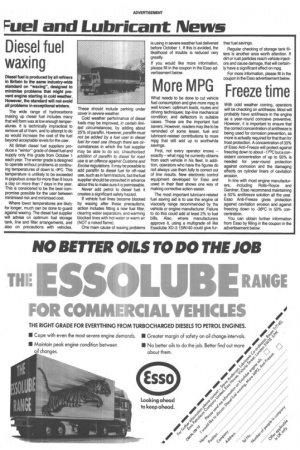More MPG
Page 55

If you've noticed an error in this article please click here to report it so we can fix it.
What needs to be done to cut vehicle fuel consumption and give more mpg is well known: optimum loads, routes and driving techniques; top-line mechanical condition; and deflectors in suitable cases. These are the important fuel savers. However, readers may like to be reminded of some lesser, fuel and lubricant-related contributions to more mpg that still add up to worthwhile savings.
First, not every operator knows — exactly — what mpg he currently obtains from each vehicle in his fleet. In addition, operators who have the figures do not always use them fully to correct out of line results. New electronic control equipment developed for Esso and used in their fleet shows one way of making corrective action easier.
The most important lubricant-related fuel saving aid is to use the engine oil viscosity range recommended by the vehicle or engine manufacturer. Failure to do this could add at least 2% to fuel bills. Also, where manufacturers approve it, using a multigrade oil like Essolube XD-3 15W/40 could give fur ther fuel savings.
Regular checking of storage tank filters is another area worth attention. If dirt or rust particles reach vehicle injectors and cause damage, that will certainly have a significant effect on mpg.
For more information, please fill in the coupon in the Esso advertisement below.






































































